Dispatches from Oxford in the Realm of England
Henry M. Miller, HSMC Director of Research
This blog reports the experiences and findings of Dr. Henry Miller while he is on assignment at the Centre for Medieval and Renaissance Studies at Oxford, England. From September 2011 to May of 2012, he will be conducting research about early Maryland and its English connections, writing, and teaching. Watch this space for Dr. Miller’s research findings, insights on the remarkable history and nature of Oxford and other places he visits, and curious aspects of living in another country.
February 5, 2012
When you read this, a notable event will have occurred here in England. February 6 marks Accession Day, when 60 years ago King George VI died and his young daughter became Queen Elizabeth II, Sovereign of England. She had been on a safari in the then British Commonwealth country of Kenya when the news came. She was later crowned queen at Westminster. At the time, she was only 25 years old, a year younger than Cecil Calvert had been when he inherited the title and Maryland from his father. Here is a famous and beautiful image of Elizabeth’s coronation borrowed from the royal web site. Along with the crown, she is holding the symbols of sovereignty. In her right hand is the Royal Scepter, which was made for Charles II in 1661, and her left hand has the Royal Orb. For more information about the Queen and Royal Family, go to http://www.royal.gov.uk/.

(Borrowed From http://www.royal.gov.uk/)
With this Diamond Jubilee, Elizabeth becomes only the second monarch in all of British history to achieve such a long reign, the other being Queen Victoria.
Elizabeth was not intended for the job since her uncle, the Duke of Wales (Edward VIII), was to be the next King. However, when he abdicated the throne to marry “That Woman” from Baltimore – Wallis Simpson – Elizabeth’s father became George VI (featured in the excellent movie The Kings Speech). Elizabeth then became next in line. Over her 60 year reign, numerous Prime Ministers have come and gone, 10 U.S. presidents have held office, countries have arisen and vanished, and the world has undergone extraordinary change. When she began, television was in its infancy, space exploration was science fiction, and there were no microwave ovens, internet, mobile phones, or fast global travel. Through it all, this woman has provided continuity and a focus for national unity. Her image is found on every coin and pound note, most mailboxes display a prominent “ER” for Elizabeth Rex, and church services, both Protestant and Catholic, feature a prayer to protect the Queen.
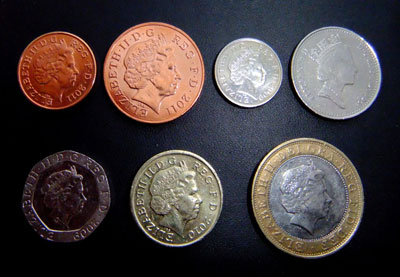

While the troubles of 1776 caused the new United States to cast off the idea of a monarchy, it endures in Britain and the Queen is still considered the Sovereign of the Commonwealth, voluntary association of 54 nations ranging from Canada, Australia and New Zeeland to the Bahamas and New Guinea. In contrast to the United States and its republican form of government, the United Kingdom is a constitutional monarchy and the Queen is officially (although not operationally) the head of both state and church. Parliaments begin with her presence, and Prime Ministers meet with her for advice. This is a long way from the absolute monarchy of the first Queen Elizabeth when George Calvert was a student here at Oxford, or that of his employer James I, or Maryland’s founding King Charles I. The Calverts were solidly behind the idea of monarchy governing the nation, but the brutal English Civil War ended any ideas of absolute rule without parliament. As you will recall, the turmoil and dictatorial actions of Oliver Cromwell caused the English people to reconsider things and recognize that the monarchy had advantages. Charles II happily accepted their offer to reoccupy the throne. His brother James II followed but was overthrown by his own daughter and son-in-law in an affair often labeled “The Glorious Revolution.” While the Stuarts were in the view of many the legitimate heirs, distant German relatives known as the Hanoverians took over in 1714 after the death of James’s last daughter Anne because they were of the Protestant faith.
Britain has been ruled since 1714 by a royal family with mixed English and Germanic roots. Up to the 19th-century it was the Hanover family but Queen Victoria married Prince Albert of the family Saxe-Coburg and Gotha so their children have that name. For a time, this was fine but the fact that London was being regularly bombed during World War I by a type of large German aircraft named Gotha did not exactly make the royal family name fashionable. In a predecessor to the not yet invented Political Correctness, they decided to change their name to the far more English friendly one – Windsor (for Windsor Castle). It was done by a royal decree in July 1917 and this picture shows the private Royal quarters at Windsor Castle where it was signed.
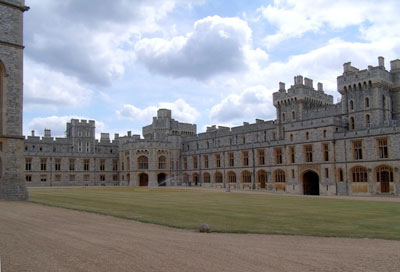
Hence, the surname of England’s royal families since the 17th century has gone from Stuart to Hanover to Saxe-Coburg and Gotha, and, suddenly, Windsor.
There are those in England who think having a monarchy is a waste of money, of no value, and should be abolished. But they do not seem to appreciate the important symbolic and unifying role, not to mention the tourism value. Here the monarchy is a national institution and Queen Elizabeth has been its resolute custodian. Indeed, she has viewed her role as a duty and responsibility. Her first public statement after learning of her father’s death was that she would devote herself to serving the people. It is fair to say that she has given her life to the service of the Kingdom, the Commonwealth and the people, and done it with hard work, immense dedication and exceptional dignity. Since 1953, her annual schedule has been packed with constant events and travel, aside from scheduled breaks each year. This pace has been maintained for six decades and very few 85 year olds, or in her husband Philip’s case a 90 year old, can continue to work at such a tempo. Looking at her calendar for last year shows constant travel, much of it international, receptions, official ceremonies, receiving dignitaries, reviewing troops, and other duties. My wife and I had the good fortune to see her and Prince Philip when they came to the United States in 2007 for the 400th anniversary of Jamestown’s founding.
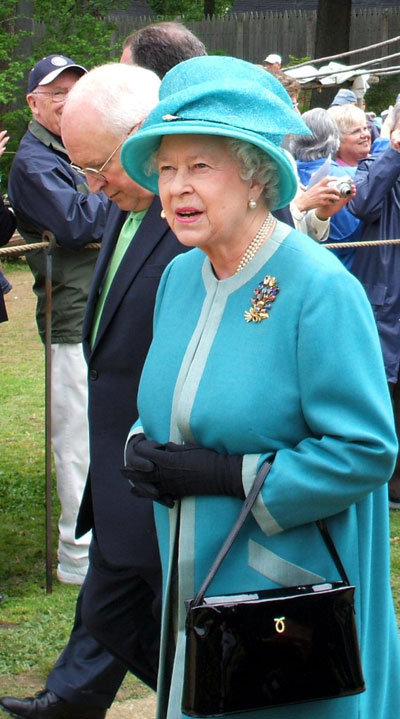
What we found especially impressive was the energy and agility she displayed at her then age of 80, as well as the sense of presence this small woman projects.
The queen fulfills a role that the first Queen Elizabeth and other monarchs since have had, serving as a focus of national unity and continuity through symbolism, rituals and a public presence. That has been most challenging in the later 20th and early 21st century, as some have questioned the legitimacy of any and all authority, the sense of decorum has evaporated, and informality become the norm. Through it all, Elizabeth has maintained a formal and regal demeanor, providing perhaps the only regular public example of refined manners to younger generations. As Sir Roy Strong has written, the current queen matches in many ways the motto of the first Elizabeth -Semper Eadem –Always the Same. The continuity she has provided was important as the British Empire came to an end and England transitioned back to being an island nation. Today, she is one of the few establishment figures who is still regarded with deference and respect by the public. Her life-long model of duty, civility, and service is truly remarkable and one that we all can learn from, no matter our nationality, beliefs, or personal circumstances.
Aside from seeing her at Jamestown, my only other link to Her Majesty came about because of a clause in the Charter for Maryland. The only annual rent required by the King for the millions of acres of Maryland in granting the Charter was “Two Indian Arrows of those Parts” in America, to be delivered at Windsor Castle on the Tuesday of Easter Week. Cecil Calvert and the later Lords Baltimore were always very careful to make sure this token was sent to the King so as to not violate the terms of the charter. In Baltimore at the Maryland Historical Society, there are a number of 17th- and 18th-century receipts from Windsor Castle for the arrows, officially certifying the payment. Given this feature of Maryland history, HSMC and its Foundation thought that a ceremonial payment of the “Maryland Rent” would be a appropriate way to kick off the 375th anniversary celebrations of the colony’s founding. We contacted the Queen and although she was not available, she appointed an assistant to receive us in 2008.

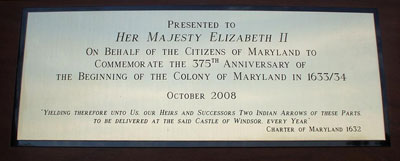
With the fine skills of HSMC’s Historic Buildings Curator Peter Rivers, we handsomely mounted two reproduction arrows on a wooden plaque. Maryland’s symbolic rent was then presented to the crown in Buckingham Palace. Later, a Royal thank you letter was received and it stated Her Majesty appreciated the historical meaning and was very impressed by the high quality of the arrows.
The Queen’s Coronation also started something else that continues here in England. The premier dish invented for the reception of her official enthronement in 1953 was called “Coronation Chicken”, a cold chicken and curry cream sauce sandwich that became a favorite around the country. One can still buy it at 7-11 type places here. It contributed to a growing consumption of curry dishes, brought from the former holdings of the Empire in India and Pakistan. While old standards like Fish and Chips, Bangers and Mash and Beef and Ale Pie remain well-liked, the most popular dish in Great Britain in the later 20th century was the curry dish Chicken Tikka Masala.
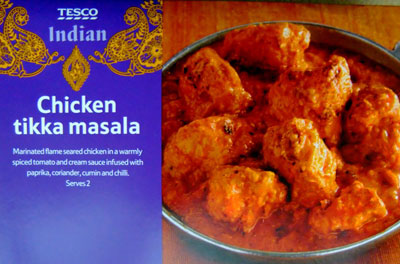
But change is underway. A recent survey just reported that the most popular meal in Great Britain today, consumed two or three times a week in some households, is Stir-fry. The onset of this oriental dish marks a new step in the evolution of British cuisine, prompted in part by global influence and in part by speed of preparation. The global interaction that England embarked upon in the early 17th century continues to bring change to this land.
So on this special day, I believe it appropriate to end with a salute to Her Majesty by providing the verses of the British national anthem God Save the Queen. Curiously, America (My Country, Tis of Thee) shares the historic tune.
God save our gracious Queen!
Long live our noble Queen!
God save the Queen!
Send her victorious,
Happy and glorious.
Long to reign over us,
God save the Queen.
Thy choicest gifts in store
On her be pleased to pour,
Long may she reign.
May she defend our laws,
And ever give us cause,
To sing with heart and voice,
God save the Queen.
God save our gracious Queen!
Long live our noble Queen!
God save the Queen!
Send her victorious,
Happy and glorious.
Long to reign over us,
God save the Queen.
Thy choicest gifts in store
On her be pleased to pour,
Long may she reign.
May she defend our laws,
And ever give us cause,
To sing with heart and voice,
God save the Queen.


